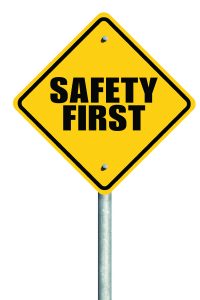 Offices are not as safe as many people believe. There are many injuries and illnesses that workers suffer in an office environment. The amount of paper, cloth chairs, and drapes are fire hazards. Wastebaskets or chairs in hallways or walkways in the office cubicle setting are tripping hazards. Wet break room or bathroom floors cause slip and fall accidents leading to an injury. Computer users, just like others who do constant repetitive hand motions often develop carpal tunnel syndrome. In addition, office automation promotes employees sitting at their desks for long stretches of time.
Offices are not as safe as many people believe. There are many injuries and illnesses that workers suffer in an office environment. The amount of paper, cloth chairs, and drapes are fire hazards. Wastebaskets or chairs in hallways or walkways in the office cubicle setting are tripping hazards. Wet break room or bathroom floors cause slip and fall accidents leading to an injury. Computer users, just like others who do constant repetitive hand motions often develop carpal tunnel syndrome. In addition, office automation promotes employees sitting at their desks for long stretches of time.
With these and many other situations giving rise to injury or illness, how can an employer of office workers help prevent office work related claims? There are many preventive measures to take for you and your employees.
Ergonomics
Ergonomics is the use of furniture or equipment designed to help workers get the correct range of motion or position while working. For instance, desk workers have chairs that adjust to the proper height, and tilt for worker comfort and good posture.
Computer keyboards slant slightly down, and users have wrist rests for their hands when using a mouse or typing on a keyboard.
Employees who sit all day need breaks to stretch their muscles. Stretching relieves muscle fatigue and a change in position prevents disorders such as carpal tunnel.
Remove or Repair Safety Hazards
Teach employees that desk and file drawers are not left open when not in use. Aisles and walkways must not have chairs, wastebaskets, or any obstacles in them. Use extension cords sparingly and then place them behind furniture next to walls to avoid them, causing workers to trip. A worker who spills something in the break room should immediately wipe the spill up. Employees should report other dangerous conditions to a manager.
Maintenance should insure that lighting works in all walkways and stairwells so that workers see and avoid falling hazards. Loose floor tiles and frayed carpeting need immediate repair — until finished, place floor stanchions that say “caution” around the area of disrepair.
Designate a periodic “inspection” time for employees to look around the work areas and adjacent space for safety hazards.
Management and employees who work together to find hazards before they cause injuries have excellent safety records. Employees are happy, more productive, and feel more loyalty to their employers.





